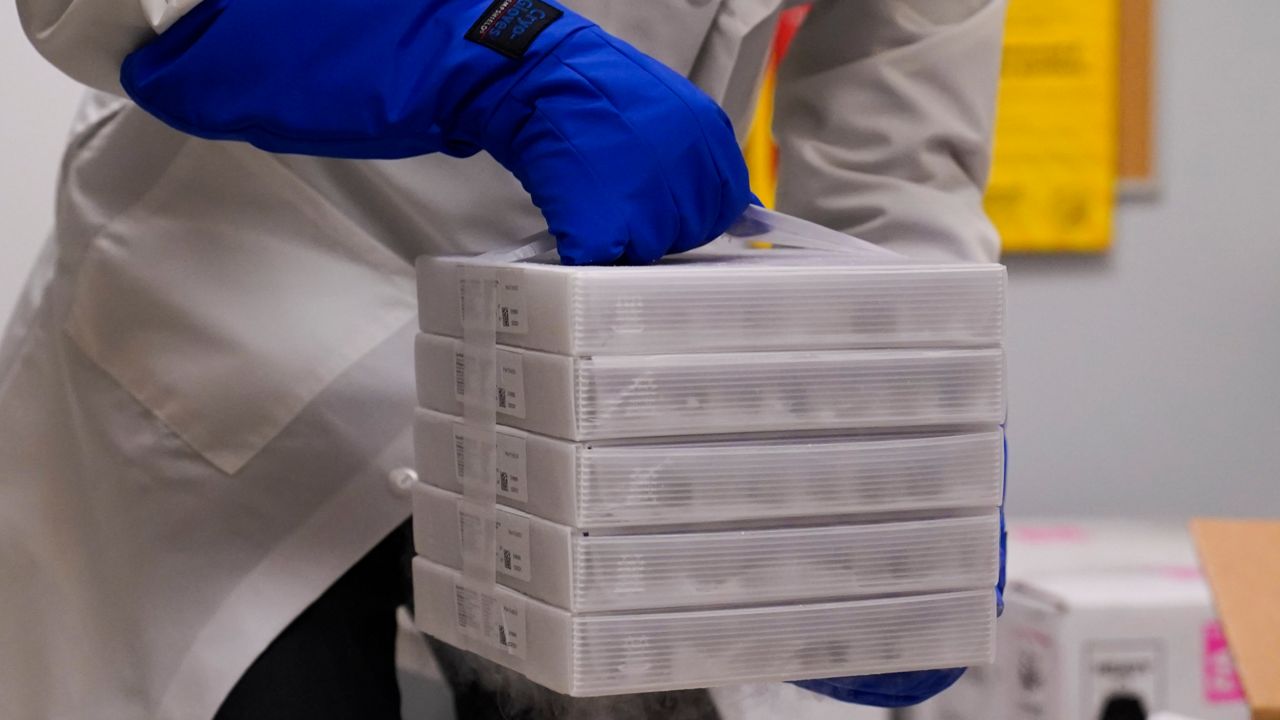LOS ANGELES (CNS) — Mirroring a problem seen nationwide, distribution of COVID-19 vaccines is moving slower than expected in Los Angeles County, but the public health director expressed cautious optimism Tuesday the pace will pick up, possibly completing vaccination of highest-priority health care workers by early February.
And while the problem of people being hesitant to get the vaccine is an issue that will need to be addressed — particularly when doses become available to the general public — there are signs that many people are anxious to get the shot.
"At one of our [vaccination] sites that was open yesterday, we had over 150 people show up — they weren't health care workers," Public Health Director Barbara Ferrer told the Board of Supervisors. "People are rapidly spreading sort of misinformation — 'you can go here and get vaccinated.' Given that we're going to be in what I call vaccine scarcity for weeks to come, we want to reassure everyone, we will get vaccines into the arms of every single person that wants to get vaccinated.
"But we do need to honor the prioritization right now, and we are going to ask that people be patient and wait, particularly right now where it's so hard until we get all of our health care workers that are working on the front lines vaccinated."
The county this week established 19 vaccination sites across the county, where the shots are being administered to high-priority health care workers who don't work in acute-care hospitals or skilled nursing facilities, where shots are being provided in-house.
She said appointments at those sites are filling up, with wait lists established at all of them. And while 150 people who weren't yet eligible for shots showed up at one of the sites Monday, Ferrer took that as a positive sign.
"We're happy actually. I think it's a very positive sign that lots of people are ready to get vaccinated," she said. "We know that there's work to be done among those that are hesitant, but we are going to ask some patience as we get to some of these higher priority groups."
Ferrer told the board that convincing hesitant residents of the safety of the vaccine will require coordinated outreach, not just to urge people to get the first dose, but to return three to four weeks later for the required second dose.
"It'll be a challenge to get everyone to feel comfortable with the first dose," she said. "And then you can imagine, some people even with the first dose their arm hurts really bad, they feel run down, they get tired — normal reactions that really means your body is creating the antibodies. But some people might say, 'I felt really crappy, I'm not going back for that second dose.' So we're going to have to do a very good job on the messaging and really partner with lots of other people."
Although there are no firm statistics about the number of health care providers who are currently being offered the vaccine but declining to be vaccinated, health officials said Monday that 75% to 80% of workers at the county's four hospitals have been agreeing to get the shots.
Ferrer said that depending on the availability of vaccine doses, the county could potentially finish vaccinating all of the highest-priority health care workers by the end of January or early February.
"The 'if' there is really depending on getting enough vaccine," she said. "... The only disappointment to date is that the doses we are planning to get this week, which we have not received yet, are much smaller than the doses we anticipated."
Once those highest priority workers are vaccinated, the vaccination program would move to other essential workers — including first responders, grocery, and transit workers — and people aged 75 and over. That phase would likely take "a month or two," she said, with priority then moving to people between 65 and 74, and those 16 and older who have high-risk medical conditions.



